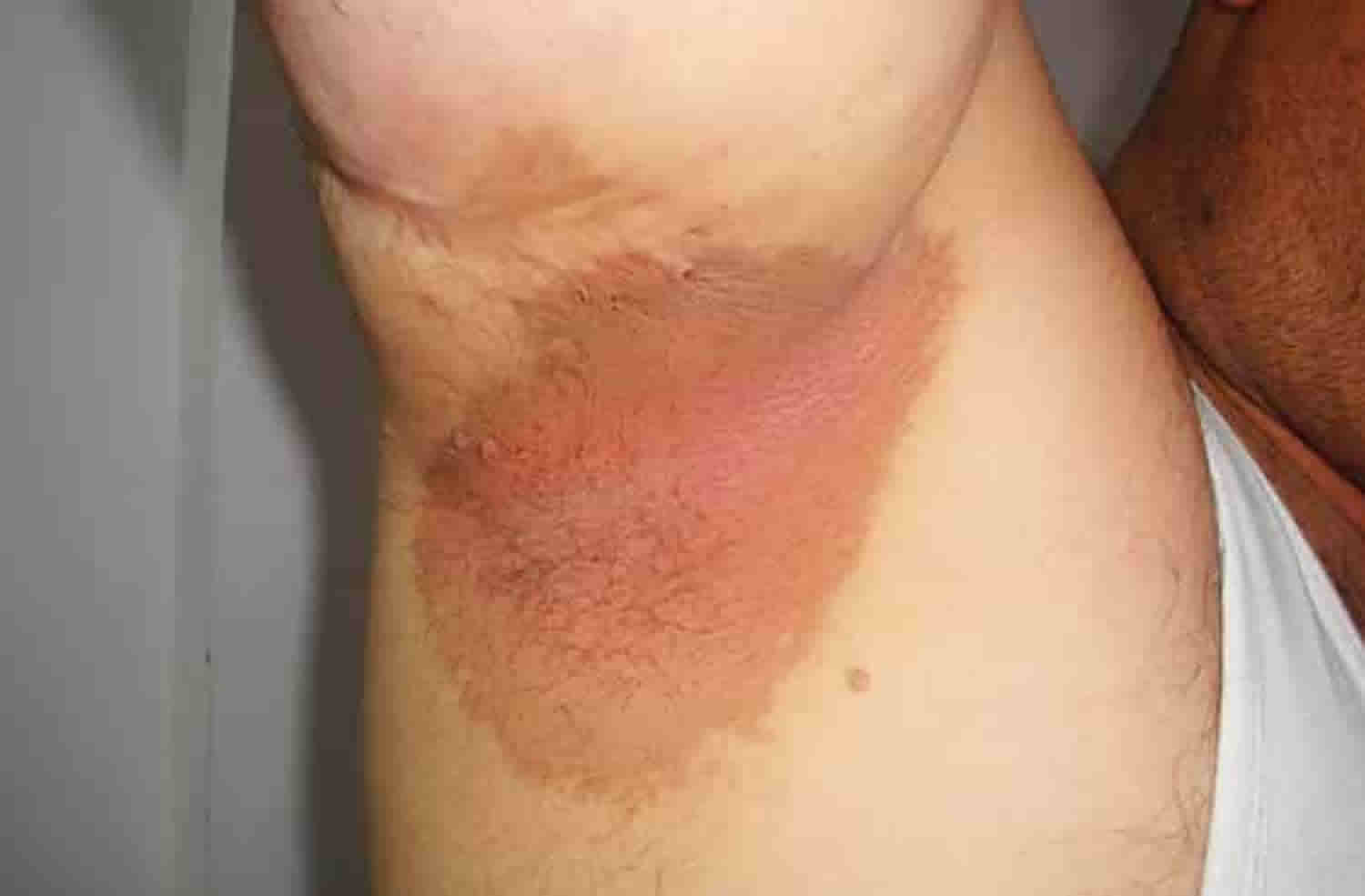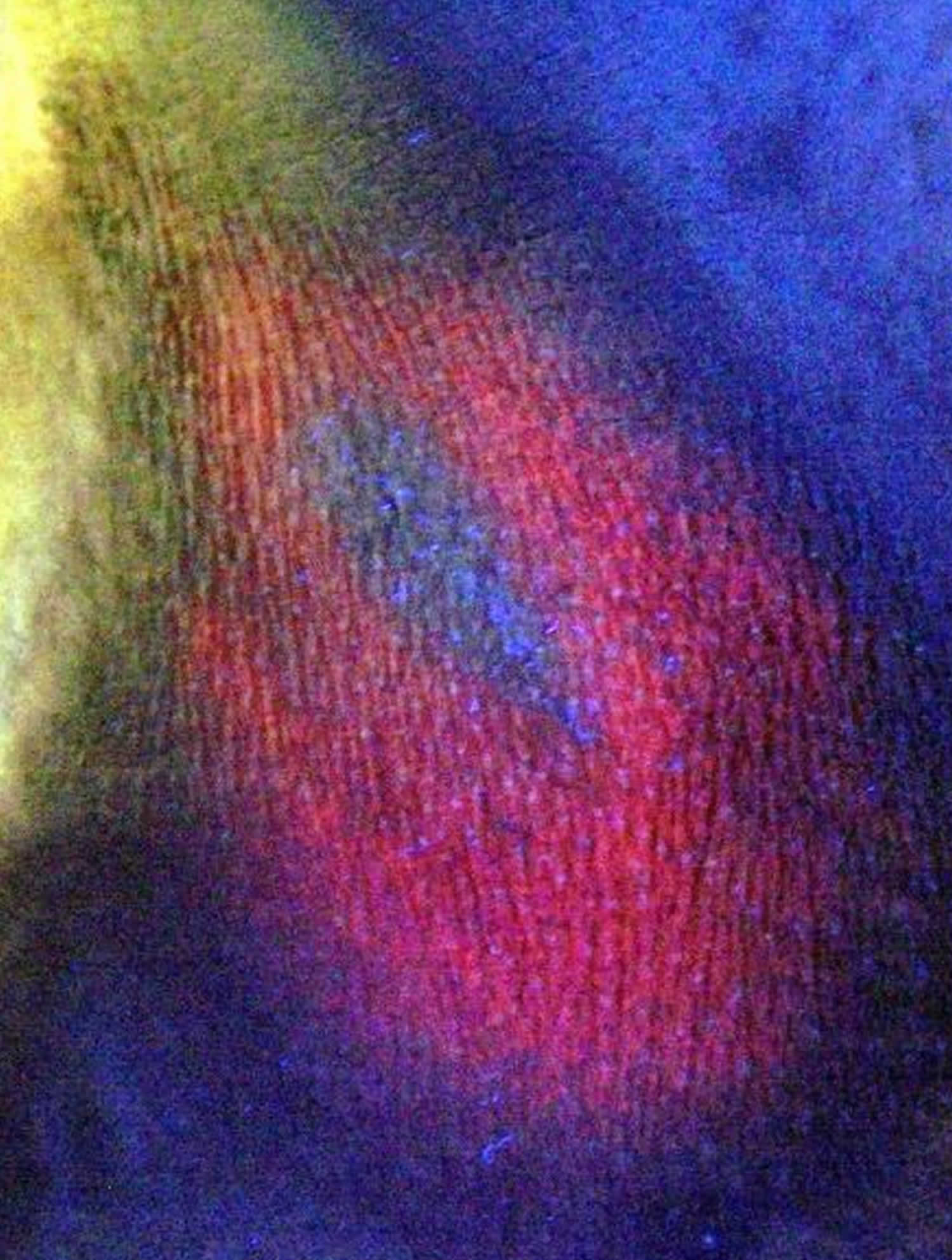Contents
What is erythrasma
Erythrasma is a common chronic skin condition affecting your skin folds in areas such as your armpit, groin and between your toes. The slowly enlarging patches of pink to brown dry skin are caused by an infection by the bacterium Corynebacterium minutissimum.
Erythrasma can affect people of any age or ethnicity, but it is more common among individuals who live in warm, humid climates. Erythrasma is also more common in dark-skinned people. Although both sexes are equally affected, men tend to have the groin infection more often than women and between the toes of females.
The following conditions may predispose people to erythrasma:
- Diabetes
- Obesity
- Excessive sweating
- Poor hygiene
- Immune deficiency
- Warm climate
- Skin of color
- Advanced age
- Other immunocompromised states.
Erythrasma is classified into three types according to location:
- Interdigital erythrasma: between the 3rd, 4th and 5th toe web spaces
- Intertriginous erythrasma: in the armpits, groin, under the breasts and umbilicus
- Generalized/disciform erythrasma: on the trunk
Figure 1. Erythrasma armpit
Figure 2. Erythrasma groin
Figure 3. Erythrasma under Wood’s light (UV light)
Erythrasma home treatment
If you suspect that you have erythrasma, try:
- Gently scrubbing the involved area with antibacterial soap
- Keeping the involved area dry
- Applying over-the-counter creams containing tolnaftate, clotrimazole or miconazole.
If the involved skin does not improve with home treatment and over the counter creams, then you should make an appointment to see a health care provider.
Recurrence of erythrasma is common. Antibacterial soap can be used to prevent recurrence. Treatment can be repeated if necessary.
Weight loss, keeping your skin dry, and using an antiseptic wash can prevent recurrence.
Treatments your doctor may prescribe
Once the diagnosis of erythrasma is established, the doctor may try one of the following treatments:
- Topical antibiotic lotions such as erythromycin or clindamycin
- Whitfield’s ointment (a mixture of benzoic acid and salicylic acid)
- Aluminum chloride solution to inhibit sweating and moisture
- Oral antibiotics such as erythromycin or clarithromycin.
What causes erythrasma
The bacteria responsible for erythrasma are gram-positive, non-spore-forming, aerobic or facultative bacilli called Corynebacterium minutissimum.
Erythrasma may coexist with or be confused with other causes of intertrigo including fungal infections such as tinea or Candida albicans (thrush).
Erythrasma symptoms
Erythrasma looks like a patch of pink to red or brown, with fine scaly skin and superficial fissures. The border of erythrasma is well-defined, meaning there is a sharp border between the affected patch and the surrounding normal skin. Over time, the pink or red color fades to tan or brown. Mild itching may be present.
The common sites for erythrasma are armpits, groin and between the toes. The intergluteal (buttock) fold, submammary (under breasts), and periumbilical skin may also be affected. Widespread infections are most often associated with diabetes mellitus.
Erythrasma is typically located in moist body folds such as:
- Under the arms (armpits)
- In the groin and inner thighs
- Between the toes, especially between the 4th and 5th toes
Less commonly, erythrasma can be found in the buttock crevice or in the folds underneath the breasts. In certain individuals, especially in those with diabetes, the infection can become widespread and can involve the trunk, arms, and legs.
Erythrasma usually causes no symptoms, but some people report mild itching or burning, especially in the groin area.
What are the complications of erythrasma?
Erythrasma is usually self-limiting. It can be complicated by contact dermatitis, lichenification, postinflammatory pigmentation, and coinfection with other bacteria, yeasts, and dermatophytes.
Serious complications are very rare. Corynebacteria have been reported to causes abscess, cellulitis, cutaneous granuloma, endocarditis, pyelonephritis, endophthalmitis, arteriovenous fistula infection and meningitis.
Erythrasma diagnosis
Erythrasma has a typical clinical appearance. Diagnosis may be supported by the following investigations.
- Wood lamp skin examination: long wavelength ultraviolet radiation causes erythrasma to fluoresce a coral-pink color due to coproporphyrin III released by the Corynebacterium minutissimum bacteria. The fluorescence is not seen if the skin has recently been washed because the responsible porphyrin is water soluble.
- Swab or skin scrapings: microscopy with periodic acid–Schiff, methenamine silver, or a Gram stain may reveal gram-positive filamentous rods. Methylene blue also stains Corynebacterium minutissimum.
Erythrasma treatment
Erythrasma can be treated with antiseptic or topical antibiotic such as:
- Fusidic acid cream
- Clindamycin solution
- Benzoyl peroxide
- Whitfield ointment (3% salicylic acid, 6% benzoic acid in petrolatum).
Extensive infection can be treated with oral antibiotics, including erythromycin or tetracycline and usually responds promptly.
Photodynamic therapy using red light (broadband, peaking at 635 nm) has also been used to treat patients with erythrasma.
A study comparing several treatments found Fusidic acid cream (Fucidin ® cream) most effective, however, it should not be used first-line due to increasing levels of bacterial resistance to this treatment when used in other skin conditions
For cases not responding to topical treatment, or for more extensive cases, good results have been reported with single dose clarithromycin 1 g. Other options include a short course of either erythromycin or a tetracycline







